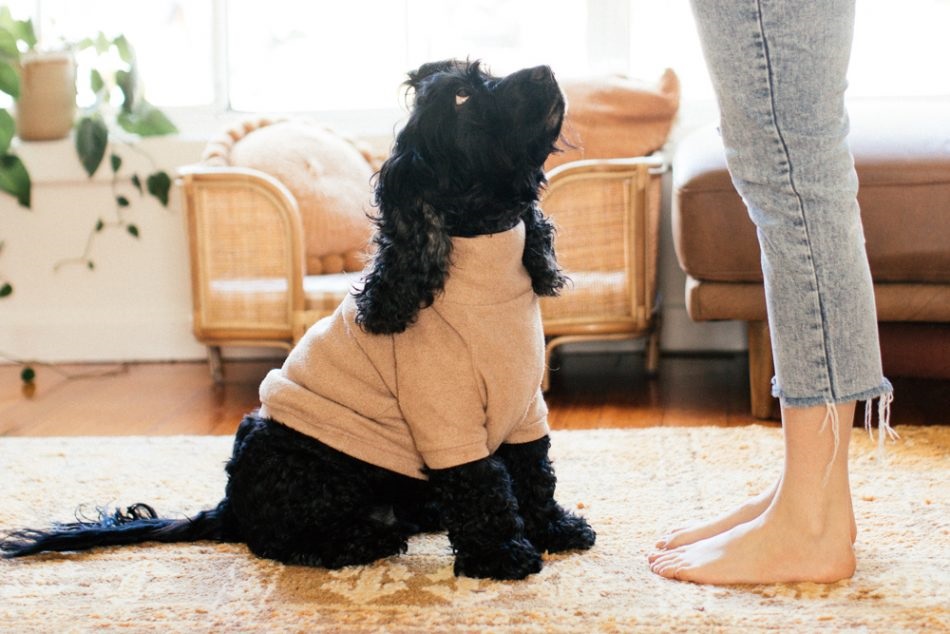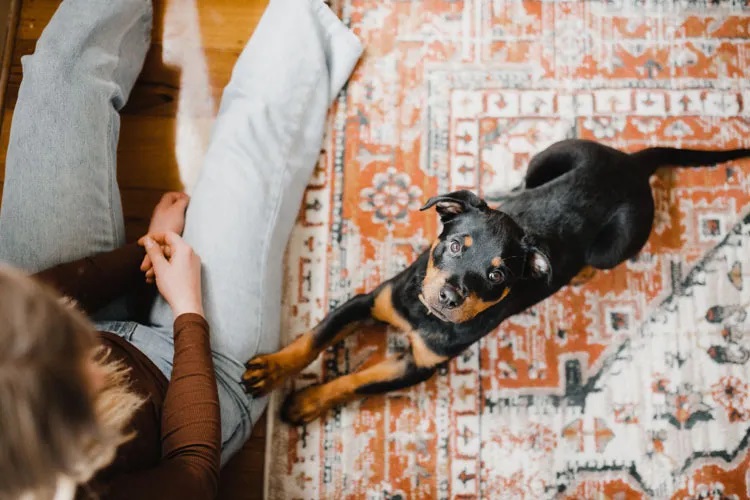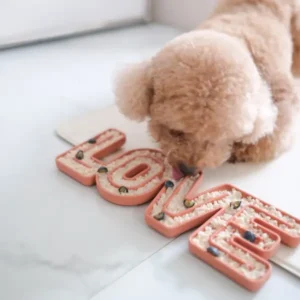
Beyond
How to Use Positive Reinforcement to Train a Dog
Training your dog doesn’t need to be stressful, confusing, or harsh. In fact, the most effective training methods are built on kindness and consistency. Positive reinforcement training for dogs is backed by science and loved by pet parents because it helps dogs learn faster, enjoy training, and build stronger bonds with their humans.
Whether you’re teaching your puppy to sit, curbing leash pulling, or managing barking, positive reinforcement can transform training into a rewarding experience for both you and your furry friend. If you’re just starting out with basics like potty training a puppy, this approach is a natural next step.
Let’s explore what positive reinforcement means, how to use it, and why it’s the best choice for long-term good behavior.
What Is Positive Reinforcement?
Positive reinforcement is a training method that rewards your dog immediately after they perform a desirable behavior. Rather than focusing on punishment, it emphasizes encouraging the actions you want to see more often. “Positive” means adding something your dog enjoys, like a treat, toy, or praise, while “reinforcement” means making the behavior more likely to happen again.

For example, when your dog sits and you offer a small snack, they learn that sitting brings good things. If they come when called and receive enthusiastic praise, they realize that returning to you is worthwhile. Dogs naturally repeat behaviors that lead to positive outcomes, which is why this method builds lasting habits and makes training both effective and enjoyable.
How to Use Positive Reinforcement to Train Your Dog
Positive reinforcement is a humane and effective way to teach your dog new behaviors. By rewarding good actions instead of punishing mistakes, you make learning enjoyable and motivate your dog to repeat them. Here are step-by-step ways to use positive reinforcement in your daily training:
1. Choose the Right Reward
Every dog is motivated by different things, so it’s important to find what excites your pup most. Many dogs respond well to high-value treats that are small, soft, and aromatic, while others may prefer praise, petting, or a favorite toy. Some dogs are even motivated by brief play sessions or favorite activities. Using the reward your dog values most will make training sessions more engaging and effective, and switching up rewards occasionally can keep your dog interested.
2. Be Consistent
Consistency is key to helping your dog connect the behavior with the reward. Deliver the reward immediately after the action occurs, ideally within one second, so your dog clearly understands which behavior is being reinforced. Using the same cues, gestures, and commands each time also helps your dog learn faster. Delayed or inconsistent rewards can confuse your dog, while steady timing and repetition build strong, lasting habits.

3. Start Small and Build Up
When teaching new behaviors, break complex tasks into smaller, achievable steps. For example, teaching “stay” might begin with rewarding just one second of stillness and gradually increasing the duration. Similarly, teaching a new trick can start with tiny approximations of the desired behavior, such as a slight movement in the right direction. Celebrating small successes keeps your dog motivated, reduces frustration, and helps them progress steadily toward full behavior.
4. Use a Marker Word or Clicker
A marker word or clicker highlights the exact moment your dog performs the desired behavior, helping them make a clear connection between the action and the reward. Using a consistent signal, such as saying “Yes!” or pressing a clicker, provides clarity, reinforces learning, and can speed up training, especially for new or complex commands. Over time, your dog begins to associate the marker with positive outcomes, making it a powerful communication tool.
5. Avoid Bribery
The goal of training is to teach, not to bribe. Hold the treat until after the behavior is performed rather than giving it beforehand, so your dog learns the action is what earns the reward. Gradually, you can phase out treats and rely on praise, gestures, or play, ensuring your dog responds even without food incentives. Avoiding bribery also encourages your dog to focus on the behavior itself, rather than simply expecting a reward every time.
6. Practice in Different Environments
Dogs don’t automatically generalize behaviors across locations, so a command your dog follows at home may not work in a park, on a busy street, or around other dogs. To build reliability, gradually practice commands in various settings, starting with low-distraction environments and slowly introducing more distractions. Repeating training in different places helps your dog understand that the behavior applies everywhere, improving obedience in real-world situations and boosting confidence.

7. Keep Sessions Short and Fun
Training should always be positive, engaging, and enjoyable for your dog. Limit sessions to 5-10 minutes to prevent fatigue, boredom, or frustration, and always end on a successful note to leave your dog motivated. Incorporate play, praise, and short breaks to maintain focus and enthusiasm. Short, enjoyable sessions help your dog associate learning with fun, strengthen the bond between you, and encourage consistent participation over time.
Benefits of Positive Reinforcement in Dog Training
Positive reinforcement helps your dog learn desired behaviors while strengthening your bond in a positive, stress-free way. It creates a learning environment where your dog feels safe, motivated, and eager to engage with you.
Some key benefits of using positive reinforcement in dog training include:
- Builds trust and strengthens the bond between you and your dog
- Encourages long-term good behavior by teaching dogs why certain actions are desirable
- Reduces stress, anxiety, and fear during training
- Works for dogs of all ages, breeds, and temperaments
- Improves problem-solving skills, focus, and engagement
- Supported by scientific research as a humane and effective method
By using positive reinforcement consistently, you help your dog become a happy, confident, and well-behaved companion. The benefits extend beyond obedience, improving your dog’s overall wellbeing and creating a relationship based on mutual respect and trust.
Conclusion
Positive reinforcement training for dogs isn’t just about teaching tricks, it’s about building trust, confidence, and lifelong good habits. By focusing on rewarding the behaviors you want, you create a positive learning environment that strengthens your bond and encourages your dog to think, explore, and engage with you willingly.
Start small, stay consistent, and celebrate every success, no matter how minor. Over time, your dog will not only learn faster and respond more reliably but also develop a stronger sense of security and happiness. The rewards extend beyond obedience: a well-trained dog is more confident, cooperative, and joyful, and the trust and affection you build together are truly the greatest payoff.
Disclaimer: Articles in our Beyond category are independent. They are not overseen by our editorial team and may not reflect our opinion.








Comments